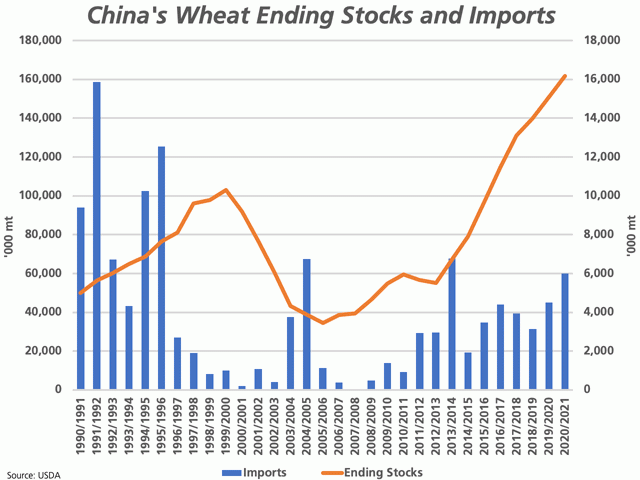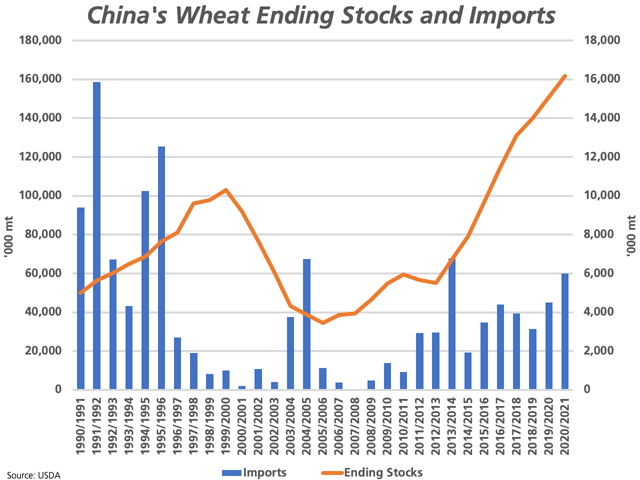Canada Markets
Canada's Wheat Exports to China
Trade relations between Canada and China may be poised to sour even further, as China warned Canada on July 6 not to meddle in China's affairs after Prime Minister Justin Trudeau spoke out against China's involvement in Hong Kong. China also released a statement warning Chinese citizens about travelling to Canada due to "frequent violent actions" by Canada's police forces.
Trade in agriculture commodities varies, with disappointing movement of canola and soybeans, while other commodities are on the move. Statistics Canada reports Canada's canola exports to China at 253,025 metric tons in the month of May, below desirable volumes, but the second highest volume shipped in 14 months. The 33,013 mt of flax exported to China was the highest volume shipped in 11 months. The 239,318 mt of dry peas exported was the largest volume shipped in eight months. The 320,527 mt of wheat shipped was the largest monthly volume shipped in 12 months.
The USDA's recent attache report Grain and Feed Update for China reports that Canada is in the running along with Australia and the United States in movement of wheat to China in 2020, quoting China's official import data that shows 1.2 million metric tons of Canadian wheat imported in the first six months of 2020, along with 1 mmt of Australian wheat and 1.3 mmt of U.S. wheat. The attache report increased their wheat import forecast for China for 2019-20 to 4.5 mmt, while also increasing their 2020-21 import forecast to 6 mmt. This would be the highest annual imports since the 2013-14 crop year.
P[L1] D[0x0] M[300x250] OOP[F] ADUNIT[] T[]
The attached chart shows China's ending stocks of wheat (brown line against the primary vertical axis) estimated to rise for the eighth consecutive year in 2020-21 to 161.855 mmt, derived from the USDA's Foreign Agricultural Service tables, while the most recent attache report pegs this number at 163.755 mmt. This would reflect eight consecutive years of increasing stocks.
Despite this trend, imports are estimated to rise for a second year to 6 mmt in 2020-21. Since 1995-96, imports have only been estimated higher in two years.
Quality in China's crop is an obvious issue, with the USDA revising higher their estimate for feed use, noting the use of sprouted wheat to replace corn in the ration, as well as issues with wheat protein and gluten levels in some areas as some wheat crops were harvested weeks earlier than normal due to concerns of drought in the country's northern growing areas.
Recovery in China's feed sector will be key, with the USDA revising estimated feed wheat use higher to 19 mmt, above average, but well-below the 35 mmt record feed use. This will take many months to play out, but the eight-year trend of production exceeding use in China could be challenged in the year ahead.
Cliff Jamieson can be reached at cliff.jamieson@dtn.com
Follow him on Twitter @Cliff Jamieson
© (c) Copyright 2020 DTN, LLC. All rights reserved.






Comments
To comment, please Log In or Join our Community .